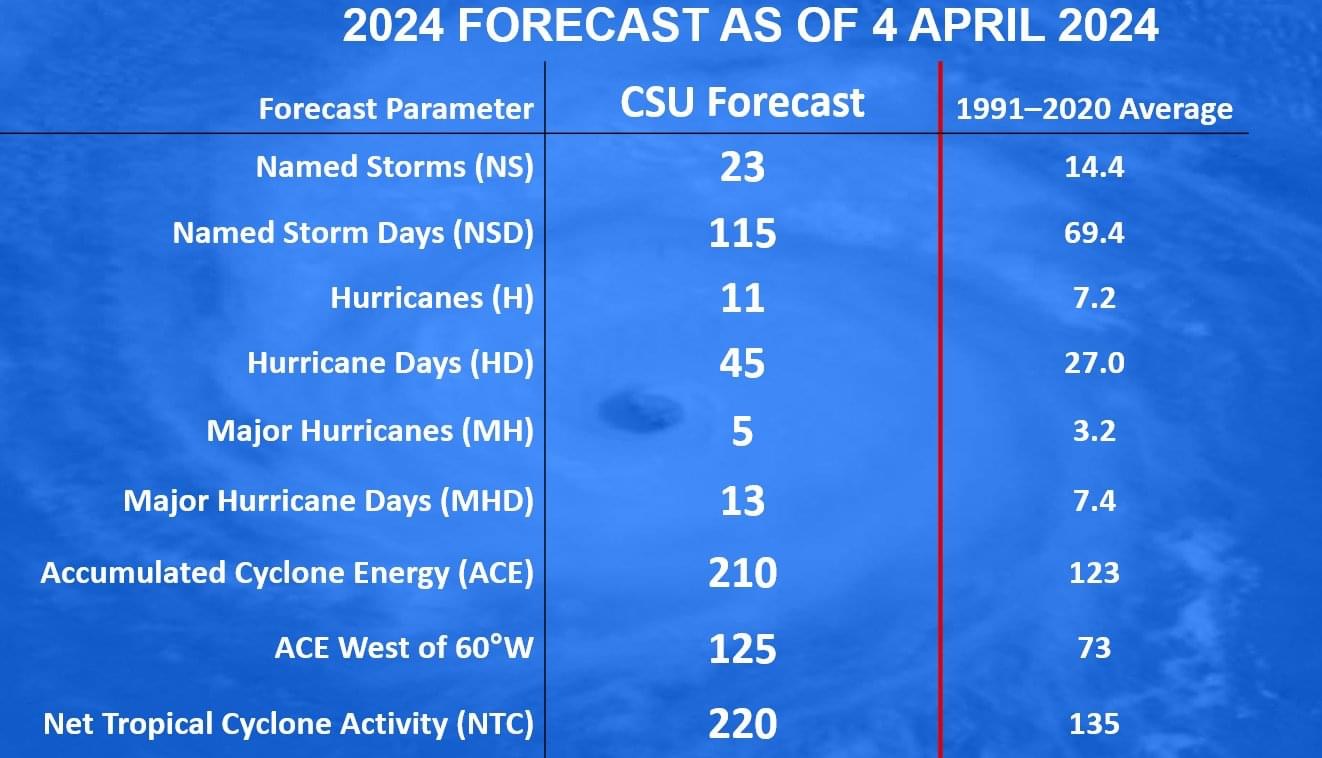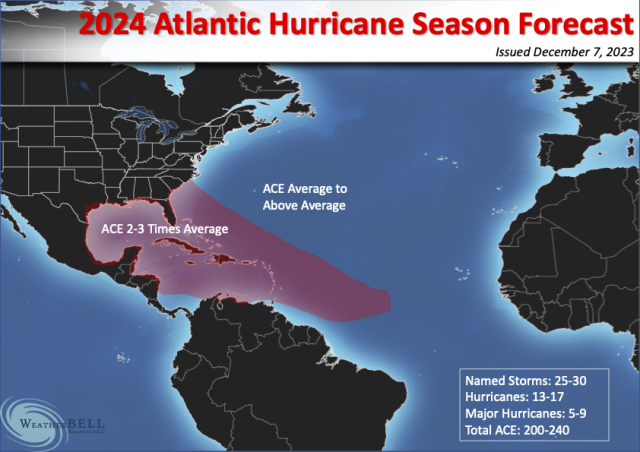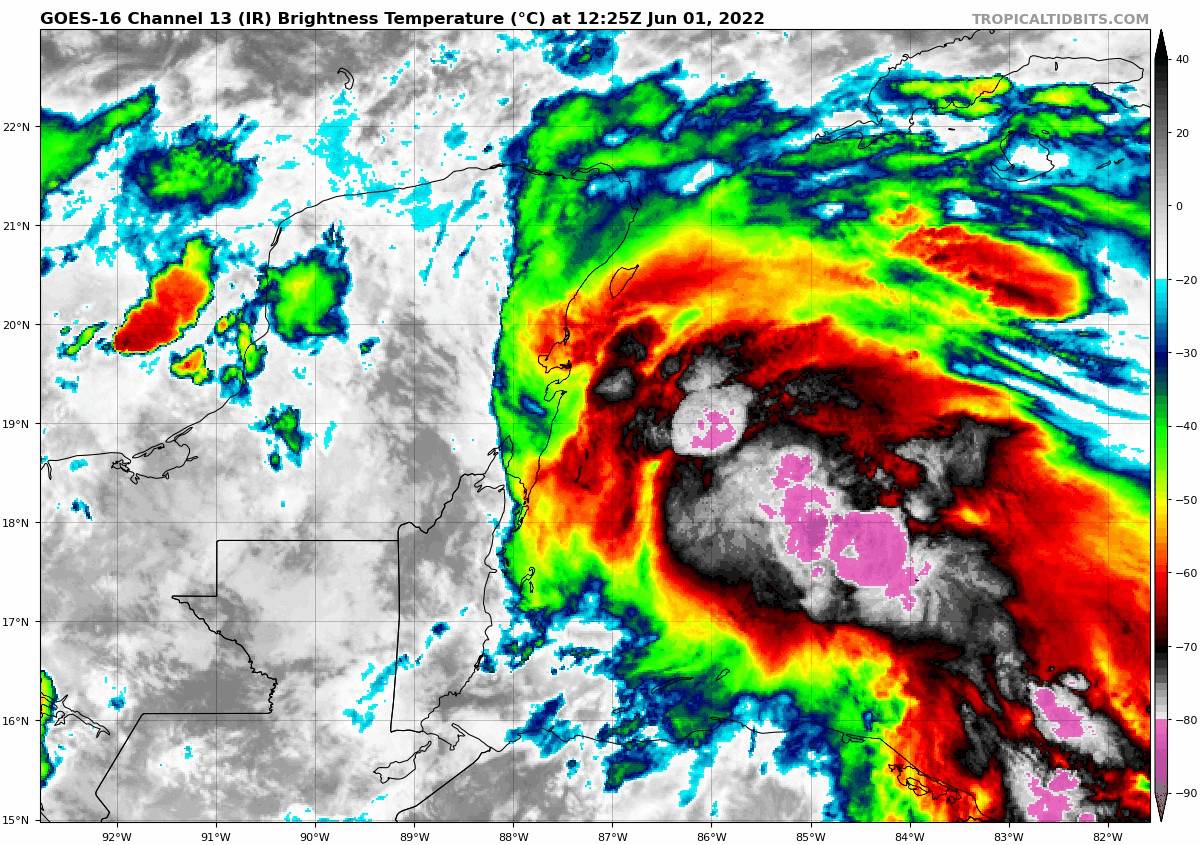For more than a decade, climate scientist Michael Mann of School of Arts & Sciences at the University of Pennsylvaniaand colleagues have annually combed through historical weather data, reviewed current oceanic and atmospheric conditions, and applied computational modeling to forecast of coming hurricane seasons.
The team, comprising Shannon Christiansen, a senior research coordinator in the Mann Group, and Michael Kozar, a former graduate researcher in the Mann Research Group, today released their prediction for the 2024 North Atlantic season, which spans from June 1 to Nov. 30. They forecast an unprecedented 33 named tropical cyclones, potentially ranging between 27 and 39.
“We’ve seen many hyperactive seasons over the past decade, and in just about all cases, like our prediction for this year, the activity is substantially driven by ever-warmer conditions in the tropical Atlantic tied to large-scale warming,” says Mann, Presidential Distinguished Professor in the Department of Earth and Environmental Science and director of the Penn Center for Science, Sustainability and the Media.
Mann says the annual prediction originally started out as a scientific exercise. It began as an undergraduate research project that Michael Kozar, then a Pennsylvania State University student, was doing under Mann’s guidance to improve the predictions other groups were making through a more appropriate statistical framework.
“This tropical cyclone project with Dr. Mann was my first exposure to meteorological research about 15 years ago,” Kozar says. “Working on this seasonal model as an undergraduate student helped confirm that I wanted to dedicate my career to better understanding and forecasting Atlantic tropical cyclones. So, it is always exciting to touch base with the team and revisit our work each spring to get an idea on how active the upcoming season might be.”
Kozar, now tropical cyclone forecaster at Moody’s Risk Management Solutions, still works with Mann every year to bolster the quality of the predictions, which now incorporate more advanced statistical models that have been refined to include a broader array of climate predictors and adjustments for historically undercounted storms.
The process and product
Christiansen explains that the forecast integrates several key climatic variables. “It takes into account the current Atlantic Sea Surface Temperatures (SSTs), which significantly influence hurricane development by providing the necessary heat and energy,” she says. “We also factor in the El Niño Southern Oscillation (ENSO) conditions, as shifts between El Niño and La Niña can dramatically alter atmospheric patterns that either enhance or suppress hurricane activity.”
Additionally, the researchers consider the mean conditions for the North Atlantic Oscillation, which affects weather patterns in the Atlantic. These climate predictors are gathered and put into the statistical model, enabling the researchers to produce a detailed range and best estimate of the named storms anticipated for the season.
This year’s predictions are influenced by particularly high sea surface temperatures in the North Atlantic Main Development Region (MDR), which, as of this month, are recorded at more than 1.9°C above average according to NOAA’s Coral Reef Watch. In addition, the forecast incorporates the anticipated development of moderate La Niña conditions, marked by a Niño 3.4 region anomaly of -0.5°C, and assumes average conditions for the North Atlantic Oscillation during the coming fall and winter. The Niño 3.4 region is a specific area in the central Pacific Ocean used to monitor and measure sea surface temperature anomalies as part of the ENSO diagnostic strategy.
Should ENSO conditions neutralize later in the year, the team predicts a slightly reduced activity of 30.5 +/- 5.5 storms, ranging from 25 to 36 storms, with the estimated 31 named storms as the most likely outcome. An alternative model, accounting for MDR sea surface temperature relative to the tropical average and incorporating the impact of negative ENSO conditions, suggests a lower activity with 19.9 +/- 4.5 named storms.
Why these matter
Mann cites three main reasons for why these results are of particular interest, saying, “first, from a preparation standpoint, these provide a lot of useful information as to whether those in areas impacted by Atlantic hurricanes should prepare for an especially active season.
“Second, these results underscore the seasonal relationship between climate and tropical cyclones, which helps to provide context for understanding how climate change is impacting hurricanes,” Mann says. “Since it’s the same basic relationships that are in play on seasonal and longer timescales, for instance, the warmth of the tropical Atlantic.”
Finally, it is an important demonstration of the strength of climate science models, Mann says. Scientists can make successful seasonal predictions based on the climate information they have, providing grounds for trust in longer-term climate predictions, particularly human-caused warming and its impacts.



